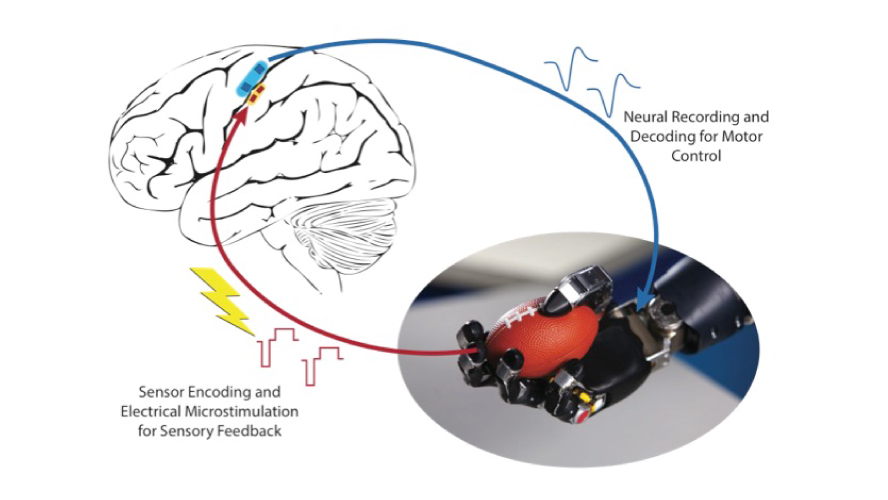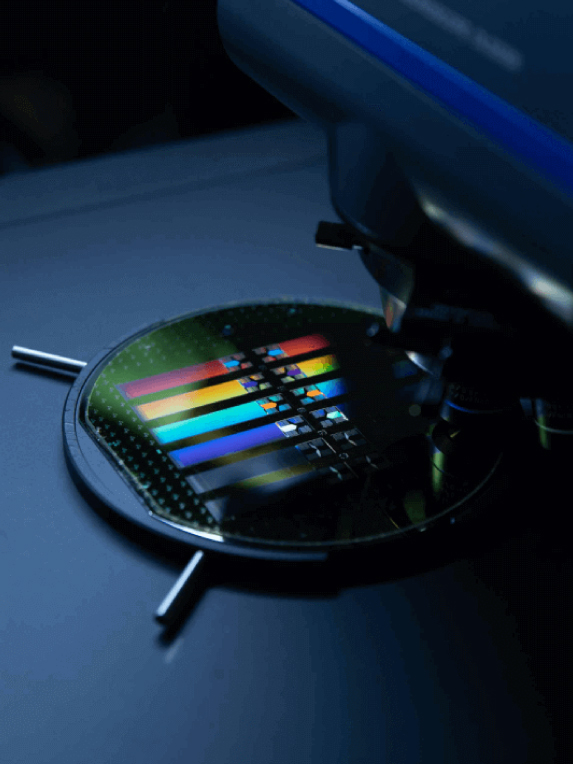
Wiring ourselves: The future of brain-computer interfaces
Researchers believe that brain-computer interfaces are going to change the world within the next 15 years.
Researchers believe that brain-computer interfaces are going to change the world within the next 15 years.

Hans Berger fell off his horse in 1893 during a cavalry training session. His accident would forever change how we study the brain.
Shortly after his fall, Berger received a worried telegram from his sister who was miles away, but sensed that something was wrong. Berger was convinced he had communicated telepathically with his sister. He vowed to understand the physiology behind psychic experience.
He enrolled in medical school. It was a fateful decision, one that would significantly advance the field of brain science. Confirming the existence of telepathy wasn’t one of them. But he’s now remembered for developing what could be considered the first brain-computer interface (BCI).

BCIs are exactly what their name suggests: literal connections between the brain and a computer or some external device.
In 1924, Berger made the discovery that electrodes attached to the scalp could “read” electrical activity in the brain. He called the technology electroencephalography, or EEG. His work helped distinguish normal brain rhythms from those associated with disease, in particular epilepsy, for which EEG, nearly 100 years later, is still used to diagnose.
In the past few decades, BCIs with medical applications have evolved at a staggering pace—the stuff of science fiction turned reality. They encompass a range of interventions that can either be non-invasive—requiring patients to wear a cap or headband, as with EEG—or invasive, requiring a neurosurgeon to implant electrodes directly into the brain. The latter may sound a little too intrusive for some, but given the medical potential, it’s a procedure that many people are willing to undergo.
Wiring the brain has allowed patients with paralysis to control prosthetic limbs with their thoughts alone. Implants in the cochlea of the ear have helped people with hearing loss perceive the sensation of sound. BCIs also show promise in restoring brain function in various neurologic and psychiatric disorders, including ALS, stroke, and Alzheimer’s.
Modern brain interface research really began in the 1970s, largely due to the work of UCLA Professor Jacques Vidal. Vidal coined the term “BCI” and challenged the field to develop technology that used EEG readings to manipulate external objects, like computer cursors and prosthetics.
Before too long, his challenge would be met.
Early work involved reading brain activity in a limited number of neurons in the monkey brain. Years of tinkering would eventually allow our simian cousins to control prosthetic limbs. And over the past two decades or so the technology has moved into humans, including Matthew Nagle, a man with spinal cord paralysis who, in 2006, learned to play the video game Pong using his thoughts alone. His brain activity was measured and translated using an electrode technology called BrainGate, developed at Brown University.
Surgeons can now implant tiny microelectrode arrays into the brains of people that can record the activity of thousands if not millions of neurons, and BCI and neuroprosthetics research in the interest of treating and rehabilitating patients is being pursued by a number of research centers around the world.
Work by a group at the University of Pittsburgh Medical Center famously allowed a man paralyzed from the waist down to feel his fingers again for the first time in a decade. Microelectrode arrays were implanted in the patient’s sensory cortex that generated touch sensations perceived as coming from his own fingers (the study’s success earned him a fist bump from President Obama at a press event).

Brand new BCI research out of Stanford successfully allowed a fully paralyzed man to communicate by thinking about handwriting. Using electrodes implanted into his brain’s movement region, the motor cortex, an AI algorithm could recognize brain activity patterns associated with specific letters and words, and translate them to text on a screen—the researchers call it “mental handwriting.”
The man was 65 years old at the time of the study and managed to type up to 95 characters per minute through this digital mind reading. That’s not far off from the average for texters of his age, who manage to clack out around 115 characters.
“In our group we’re really focused on restoring function,” says Frank Willett, a researcher at Stanford’s Neural Prosthetics Translational Laboratory and lead author on the new paper. “We’re really looking to help people with paralysis by using typing thoughts and computer applications.”
Amy Orsborn, a professor of bioengineering at the University of Washington who was not involved in the new research, applauds the advance. “There are a lot of reasons to be optimistic based on the impressive performance the authors achieved,” she comments. “One obvious reason is because they achieved a huge leap in performance on a challenging but important task like typing.”
Yet she cautions that this will likely not be an easily accessible technology anytime soon: “There is a lot of non-trivial engineering that will need to happen to translate their algorithms into something that can run in a small at-home device.”
This could change as investors like Elon Musk get in on the BCI boom.
The billionaire entrepreneur notoriously entered the BCI sphere in 2016 with his biotech company Neuralink. They have copious financial support and are working on a tiny microchip—one thinner than a human hair—that so far has been able to read brain activity in rats and potentially control behavior.

Willett welcomes Musk’s enthusiasm as means of moving the field forward.
“I welcome anyone who brings resources and money to the table in the interest of cutting-edge advances,” he says. “A company behind this type of research, and that can manufacture devices efficiently where a laboratory can’t would be great!”
The field’s momentum suggests that new medical applications for BCIs will not slow down any time soon.
At Thomas Jefferson University in Philadelphia, neuroscientist Mijail D. Serruya, MD, is looking at brain interfaces to help with stroke recovery and, admittedly, is involved with multiple companies pursuing BCI technologies.
His research group uses MRI scans to detect residual brain activity in areas affected by a stroke. This gives them a clinical target.
By implanting microelectrodes at the stroke site, they can decode residual brain signals associated with an intended function, such as grasping. They hope to train patients to control their brain activity in a way that allows their thoughts to drive prosthetic limbs, which would be a first in stroke recovery.
One particular area Serruya anticipates is the idea of “living electrodes,” or actual cultured neurons implanted into a diseased brain, which can be controlled by light through a process called optogenetics.
He also believes Neuralink will have their first patient implanted with an advanced microelectrode system within five years and foresees a slew of pharmaceutical and biotech companies joining the fray.
“I expect there will soon be additional fully implantable BCI options as the technology slowly moves away from academic labs and into pilot human clinical trials,” he predicts. “Within 5 years, I would expect the FDA to have approved one or more options for people with quadriplegia, such as the majority of people with ALS and brainstem stroke.”
Not long after that, Serruya envisions BCIs helping with the secondary symptoms that sadly often accompany paralysis, such as impaired bowel, bladder, and sexual function. 15 years down the road, they may even allow patients paralyzed due to stroke move somewhat normally again.
Serruya and others acknowledge that there are plenty of concerns to be worked out and BCIs advance. And not just clinical worries, like long-term side effects and irreversible changes to the brain, but also ethical considerations. Still, he is optimistic.
“I think if BCI is going to change the world within the next 15 years,” Serruya says, “it will be through helping fellow humans be the best that they can be—not superhuman, just ‘regular.’ More at ease.”
